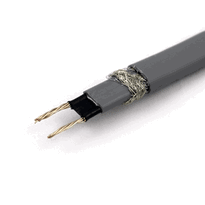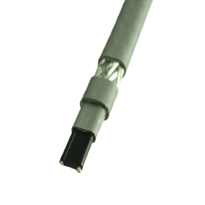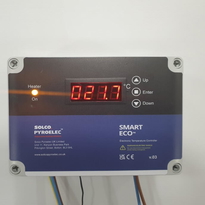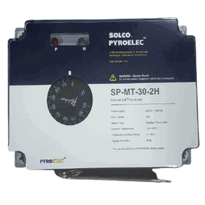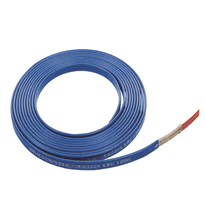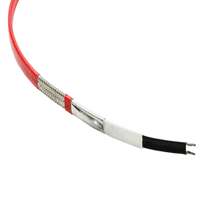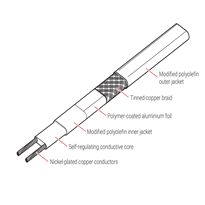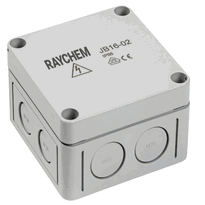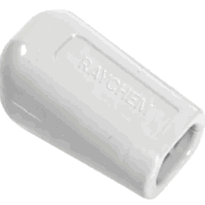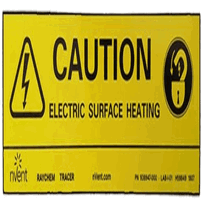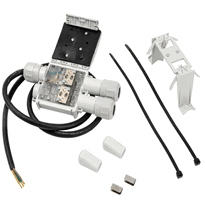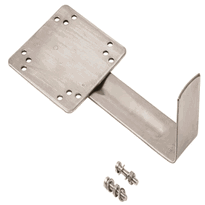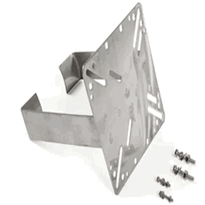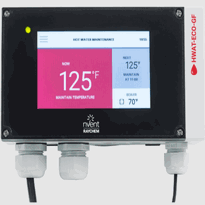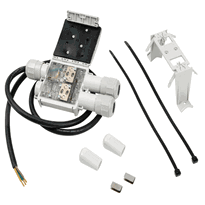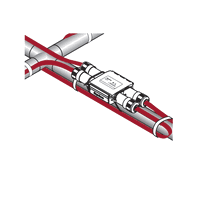Electric Heat Cable
Electric heat cables are specialised systems designed to provide consistent warmth for pipes, surfaces, or industrial applications. They typically consist of self-regulating or constant-wattage types constructed with durable materials such as conductive polymers, insulators, and UV-resistant jackets, ensuring safety and longevity.
Electrical specifications range from 230 to 277 volts, with power outputs between 3 and 20 W/m. These cables meet recognised standards from UL and CSA, ensuring environmental and electrical safety.
Proper installation, insulation, and adherence to certifications optimise efficiency and durability. Following best practices throughout their operational lifespan enhances both safety and performance.
Continued examination reveals precise application details and considerations for maintenance, ensuring reliable and effective use of electric heat cables in various settings.
Types of Electric Heat Cables and Their Applications
Electric heat cables are designed to produce heat through electrical resistance, and they're available in various types tailored to different applications and environmental conditions. Power-limiting cables are engineered to maintain a fixed maximum wattage output, which enhances safety and energy efficiency by adjusting heat output according to the surrounding temperature. This makes them suitable for environments where precise control over heat is required. Their resistance decreases as temperature drops, increasing power output, and increases as temperature rises, limiting power, which helps prevent overheating while maintaining effective temperature control. The resistance behavior of self-regulating cables is due to the semiconductor materials embedded within the cable matrix, allowing for automatic adjustment of heat output. Constant-wattage cables deliver uniform heat along their entire length, making them ideal for applications that require consistent temperature maintenance, such as industrial processes or the conditioning of large pipes and tanks. Self-regulating cables adapt their heat output based on ambient temperature. They automatically reduce power when the environment warms, preventing overheating and reducing energy consumption—particularly beneficial in variable climates or complex installation scenarios. Heating tapes are a simpler form of electric heating element, manufactured in fixed lengths to accommodate smaller pipe sections, or for precise placement where specific heating patterns are needed. The choice of cable type depends on factors such as flexibility, temperature regulation, and environmental suitability, ensuring optimal performance and safety across both industrial and residential settings.
Construction Materials and Design Features
The construction materials and design features of heat cables are crucial in determining their durability, safety, and performance across different environments. The core of these cables typically comprises conductive polymers that enable self-regulation by adjusting heat output in response to temperature changes. Embedded within the core are parallel wires made from copper or alloy materials, which provide reliable electrical pathways. Self-regulating (The construction materials and design features of heat cables are crucial in determining their durability, safety, and performance across different environments) cables adjust their resistance based on ambient temperature, contributing to energy efficiency. Insulation layers are crafted from materials that withstand high temperatures, such as specialised thermoplastic elastomers or fluoropolymers. These are protected by outer jackets designed to resist ultraviolet (UV) radiation and prevent moisture ingress, often reinforced with braided metallic shields to enhance mechanical durability and provide effective grounding.
The design features of heat cables focus on ease of installation and adaptability. Flexibility is a key aspect, allowing the cables to be easily bent around pipes and surfaces. For indoor applications, low-profile mats are commonly used to minimise visual impact and simplify fitting. Protective outer layers are also employed to resist weather and chemical exposure, ensuring long-term performance. Additionally, the manufacturing standards for heat cables are strict to meet safety and performance regulations across different regions.
Many heat cables incorporate integral or external thermostats, grounding shields, and connection accessories. These components are vital for maintaining safety standards, energy efficiency, and user control capabilities.
| Material/Feature | Function | Example |
| Conductive Polymer Core | Enables self-regulation and variable heat output | Embedded within self-regulating cables |
| Insulation & Outer Jackets | Provide high-temperature resistance and environmental protection | Fluoropolymer jackets, UV-resistant materials |
| Metallic Shields | Offer mechanical durability, grounding, and fault protection | Braided copper or alloy shields |
| Flexibility & Design Features | Allow easy installation, adaptability, and low profile | Thin mats, reinforced cables |
| Safety & Control Components | Enhance safety, energy efficiency, and user control | Thermostats, grounding braids |
This combination of high-quality construction materials and thoughtful design features ensures heat cables perform reliably, safely, and effectively in the often demanding UK climate.
Electrical Specifications and Power Considerations
Electrical specifications and power considerations are essential for ensuring the safe, efficient, and reliable operation of heat cables across a variety of applications.
Heating cables are typically rated for voltages between 230 and 277 volts, compatible with standard UK mains supplies, with insulation materials capable of withstanding continuous high temperatures. For example, fluoropolymer insulations are rated up to 600 VAC, providing reliable thermal and electrical performance, while mineral insulated cables can endure even higher temperatures, suitable for more demanding environments.
The power output of heat cables varies from approximately 3 to 20 watts per metre, depending on the specific application requirements. The wattage directly influences the current drawn, which must be considered when designing circuits to prevent overloads and ensure optimal performance. Higher wattages result in increased current flow, necessitating appropriately rated wiring and circuit protection measures.
Inrush currents, particularly at 230 V systems, typically range from about 76 to 430 milliamperes per metre. These spikes in electrical current at switch-on require suitable circuit protection devices, such as fuses or circuit breakers, to safeguard the electrical system and prevent potential faults.
Standard circuit capacity for heat cable installations generally begins at a minimum of 16 amps, though this may vary depending on the total load, cable length, and existing electrical infrastructure. When planning installation, it's crucial to consider the wire gauge, circuit load, and the total resistance of the cable run to avoid overloads and maintain consistent heat output.
Additionally, selecting high-quality insulation materials and components designed specifically for sustained high temperatures ensures durability and safety over the cable’s lifetime.
Installation Tips and Best Practices
Proper installation of heat cables requires careful attention to placement, securing methods, and insulation to ensure safe, efficient, and uniform heating. Begin by positioning the cable starting at one end of the pipe, whether it's straight or curved. For straight pipes, align the cables parallel along the length to promote even heat distribution. When dealing with curves, wrap the cable spirally around the pipe, maintaining consistent spacing throughout. Secure the cable every 30 centimetres using suitable securing methods such as electrical tape or cable ties. Take care not to overtighten, as this could damage the cable or reduce its effectiveness. Once the cable is properly laid, insulate the pipe with compatible foam or fibreglass materials. Make sure the insulation snugly covers both the pipe and the cable, particularly around bends and joints, to minimise heat loss and optimise energy consumption. Proper insulation plays a crucial role in maximizing energy efficiency and protecting the system from heat loss. Regular inspection during installation for any signs of damage or incorrect spacing helps to ensure safety and optimal system performance. [Inspecting the system regularly helps identify potential issues early](https://www.aeheatingandcooling.com/blog/how-to-diy-install-heat-cable-home-pipe), and adhering to these best practices will enhance the reliability and longevity of the heating system.
Standards, Certifications, and Durability Aspects
Certifications and standards are vital in guaranteeing the safety, reliability, and long-term performance of electric heat cables. They serve to confirm that products comply with strict safety protocols established by recognised bodies such as UL (Underwriters' Laboratories) and CSA (Canadian Standards Association). Certification labels help consumers easily identify compliant products. UL certification verifies that the cables meet rigorous safety and performance benchmarks, including thermal and electrical safety. Similarly, CSA standards provide assurances tailored to the requirements of the UK and Canadian markets. Third-party testing conducted by recognised laboratories is crucial in ensuring that cables can withstand a variety of environmental conditions, thermal cycling, and mechanical stresses over prolonged use. Such testing ensures that the cables are durable and capable of maintaining performance over time. Moreover, environmental resilience testing guarantees that electric heat cables are suitable for diverse installation environments and conditions. Certifications also specify suitability for diverse environments, including standard applications and hazardous locations such as Class I, Division 2 zones. These standards help to promote consistent performance and facilitate users in selecting cables that meet the necessary safety and durability requirements for both residential and industrial applications. Adhering to recognised standards and certification requirements is essential for ensuring the safe and effective operation of electric heat cables across the UK. They not only uphold safety and performance benchmarks but also extend the lifespan of the products, giving consumers confidence in their reliability under various conditions.
Conclusion
Understanding electric heat cables involves recognising their various types, construction materials, electrical specifications, installation methods, and compliance standards. Proper selection aligned with specific applications ensures efficient and safe operation. Accurate installation following best practices prevents damage and maximises longevity. Awareness of certification and durability standards guarantees reliability over time. By applying detailed knowledge and precise procedures, users can optimise performance, minimise hazards, and ensure the effective use of electric heat cable systems in diverse heating applications.








